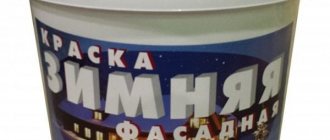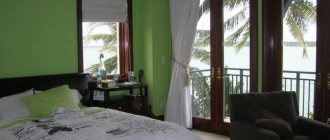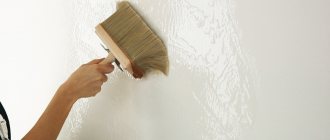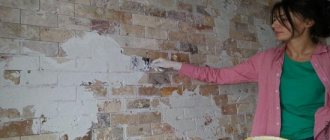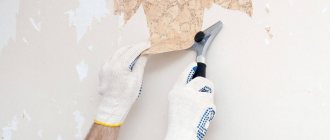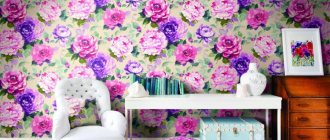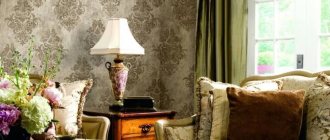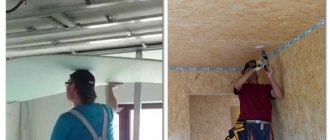If you want to be in good spirits every day and enjoy the sight of very beautiful sea shores, steep cliffs, beautiful snow-white mountains and flowing waterfalls, admire graceful animals, exotic plants and sandy beaches of the Mediterranean Sea, you don’t have to go to distant edges.
Everything is much simpler: buy photo wallpaper, and every day you can admire realistic paintings, portraits, bouquets and various other thematic images in real size.
The service life of this beauty is 8-10 years. These photos and images can be used to decorate different rooms in an apartment, office, or cafe. Often designers use photo wallpapers to decorate not only walls, but also ceilings, doors, and furniture; Plus, there are also those that are used to lay the floor.
Advantages and objectives of photo wallpaper
Not only the catalog of photo wallpapers has increased. The number of tasks that can be successfully solved with the help of this decorative wall covering has increased.
All wall finishing options, review of materials, photos
So, photographic wallpaper can:
- visually expand a narrow and small room;
- create the desired decorative element - a false window, an imaginary door to the terrace or a pseudo-fireplace;
- strengthen the style: say, photo wallpaper with the Colosseum will emphasize the Roman atmosphere, and views of the savannah will highlight African motifs in the interior;
- highlight a certain area, create an accent wall, mark a certain place in the apartment;
- The ease with which wallpaper is attached allows you to quickly, without much expense, “update” the room, adjust the color scheme, and hide minor flaws on the wall.
Let's summarize: photo wallpaper is a simple but effective tool for creating comfort and mood at home.
Recommendations for pasting
Try to stick the panels on leveled walls
The first step is to prepare the wall surface. We remove the old wallpaper, seal all cracks and depressions with cement mortar or putty.
If there are rust spots, paint over them so that the redness does not appear on the new wallpaper. We prime in two layers with a deep penetration solution.
We purchase glue suitable for a specific type of wallpaper. Then we lay out the panels on the floor and check the image quality. You also need to pay attention that the edges are smooth. We leave the canvas unfolded for a day so that it straightens out.
If the wallpaper is glued overlapping, the seam is positioned away from the light source. We carry out horizontal markings on the wall using a building level. To determine the vertical plane we use a plumb line.
The quality of pasting of the remaining parts will depend on how smoothly the first element of the photo panel is pasted. Watch the intricacies of gluing photo panels on walls in this video:
Apply glue according to the instructions for the wallpaper. Most often you need to smear both the wall and the canvas. Then we go over it with a rubber roller to remove any air bubbles.
During the work and until the pasted surface has completely dried, you need to ensure that there are no drafts. You can paste over the walls at any time of the year; the room must have a positive temperature.
Correctly selected sizes and shapes of photo wallpaper will help visually expand the room and create coziness and comfort in the home.
Types of photographic wallpaper
The range of photo coverings for walls is constantly expanding. Today we can purchase:
Paper photo wallpaper . They are the cheapest, but the quality of the paper is often low. The print quality is also mediocre: we are talking about the offset technique that is used to produce press.
Vinyl photo wallpaper is more durable because it is coated with polyvinyl chloride and impregnated with an antifungal compound. The basis of vinyl wallpaper can be the same paper or, which is much better, non-woven material.
The advantages of vinyl coating include not only increased wear resistance compared to regular paper. But also a wealth of textures: these wallpapers can imitate Venetian plaster, watercolor, the texture of sand, frost, corduroy, and burlap.
Wallpaper with foam vinyl is distinguished by texture and density, which makes it good at hiding roughness and unevenness on the walls. Wallpaper covered with thick vinyl attracts with its glossy shine and moisture resistance.
Vinyl wallpaper is an example of a balance between quality and price. But they also have some drawbacks: covering walls with vinyl yourself is not so easy, and temperature changes can cause such wallpaper to become deformed.
non-woven wallpaper with photo printing in the interior. They did not have time to become a consumer product. But gluing them is not difficult (the glue is applied to the wall); they are reliable, hygroscopic and breathable. Among the disadvantages, mention should be made of the high price compared to paper counterparts.
In addition to these main types, photo wallpapers can be coated with varnish or laminating film, shiny or matte.
Which ones are better to choose?
Of course, vinyl with micropores, which allow the walls to “breathe,” or non-woven, if the family budget allows. Paper photo wallpapers are a short-lived option; they are suitable for quick cosmetic repairs.
The voice of the past, or photo wallpaper of the 20th century
Recently, wallpaper with a realistic image applied to the canvas has begun to gain unprecedented popularity. Gone are the days of the Soviet Union, when you could buy an unprecedented, scarce innovation from under the counter - “photo wallpaper”. Back then it was wallpaper made from low-quality paper using faded and discreet colors. Although the image on the photo wallpaper amazed unpretentious residents with its beauty, after a few years the picture tended to fade, and instead of a beautiful and bright image, a piece of paper with faded colors hung on the wall.
Photo wallpaper - format and sizes
Photo canvases, which are a mass product, can be:
- wide-format, that is, on the entire wall. This coating consists of several (up to 16) parts that require precise joining;
- narrow format, oriented vertically or horizontally;
- small and solid, creating the illusion of paintings or windows;
- segmented, from which modular pictures are formed.
The market offers the following standards of photographic canvases for the wall:
- 1 x 2.7 m;
- 1.5 x 2.7 m;
- 2 x 2.7 m;
- 3 x 2.7 m.
In addition, photo wallpapers can be divided into categories, depending on the perception of the picture. For example:
- images that give perspective;
- background images;
- panoramic;
- drawings-sketches;
- images with 3D effect.
Many stores accept individual orders not only for the subject, but also for the size of the photo wallpaper. And they even offer to make a color proof - a smaller copy of the future finish, which can be “tried on” to your home.
Made to order
Experts will help you adjust the selected image to the size of the wall.
There are companies specializing in the production of photo wallpapers based on individual projects. To place an order, you need to measure the wall or that part of it on which the panel will be located.
Then select the image you like. Most often, the selected photo needs to be cropped to the desired size. There is a service where you can enter the size and move the cropping frame to choose the best viewing angle in the painting.
When choosing large photo panels, you need to choose the right resolution so that the image does not turn out blurry.
Thematic classification of photo wallpapers
The image on the wallpaper and its plot are no less important than strength, water permeability and other technical characteristics. Fortunately, the choice of designs is huge, and the ability to create custom wallpaper makes it completely limitless.
In general, however, the subject variety of finished photographic canvases can be divided into the following categories:
- landscapes - clearings, forest edges, mountain ranges, exotic islands, coasts, etc.;
- floristry – flowers, bouquets, branches, ikebana;
- urbanism - skyscrapers, city streets and alleys, highways, highways, sights of London, Paris, New York and the like;
- portraits of famous, famous persons or family members, forefathers and ancestors;
- abstraction (art wallpaper) – patterns, combination of living and inanimate objects, lines, spirals, zigzags, cubism;
- equipment - motorcycles, racing cars, vintage cars, trains, sailboats, airplanes;
- animal art - cats, dogs, giraffes and elephants, horses, butterflies, dinosaurs, swans, flamingos, dolphins, etc.;
- geographical - atlases, maps, the beauty of the pampas, jungle and prairies;
- ethnographic – images of pagodas, pyramids, mausoleums, minarets, ziggurats;
- hobbies - music, fashion, cooking, travel, sports, anime, literature, graffiti, history...
In recent years, macro photography has been in fashion: wallpaper with large flowers, dew drops, leaves on which every vein is visible, dragonflies, rainbow bubbles and feathers. Wallpaper with imitation of wall paintings, as well as discreet, black and white photo canvases - city paving stones in the light of the moon, zebras against the backdrop of majestic baobab trees, engraved clear silhouettes of bridges - do not lose their relevance.
What should the file resolution be for printing?
Before visiting a company that prints images on photo wallpaper, you should decide on the resolution of the image. It must be suitable for recreating it on canvas.
The most common opinion - all images can be stretched to a certain size - is in reality wrong: you can stretch it, but the quality will be irretrievably lost, and there is no point in pasting such a sample.
Let's figure out what happens if you change the size of the picture: any image consists of pixels that can be compared to a single point on the monitor screen. In order to stretch the image to the desired size, you need to create a third one from two adjacent pixels. It can be created from colors that predominate on nearby pixels.
The smaller the picture, the more artificial pixels need to be created, but this will inevitably reduce the image quality.
Any image is measured in pixels, and this parameter is called resolution. The more pixels, the better the quality of the photo wallpaper. Therefore, if you select a picture with a resolution of 1368x768 for photo wallpaper, then the quality will be worse than the resolution for photo wallpaper of 1600 by 900.
Tip: if you are choosing from photographs of several resolutions, it is better to choose the one that has a higher resolution.
Thus, photo wallpapers 1920x1080 will be of higher quality and clearer than photo wallpapers 1366x768. If you choose between the size of photo wallpapers 1280x1024 and the image resolution of future photo wallpapers 1920x1080, you should pay attention to the latter option.
Finally, decide to use photo wallpaper to decorate your room and you will realize your wildest dreams and decorate your interior with love and to your taste.
Photo wallpaper - rules of choice
The style of the home is a factor that cannot be ignored when choosing wall decoration. Photo wallpaper, undoubtedly, must correspond to the interior, the idea of the house. But it is important to take into account the parameters of the room, the location of window and door openings. As well as the quantity and dimensions of furniture.
If there are not very many objects, they are squat, you can “swing” at wide-format, panoramic wallpaper covering the entire wall.
In a small, narrow room with a lack of lighting, light wallpaper that creates a distance will “play” - a path that is lost in the fog, a door that opens to the garden.
If the house has a lot of furniture and decorative details, it is better to choose small, accent, vertical or horizontal photo wallpapers.
The plot also needs to be taken responsibly. Galloping horses or a bubbling volcano are unlikely to be appropriate in a bedroom where peace, including visual peace, is required. And it’s better for spaceships not to roam the expanses of the kitchen.
Photo wallpaper in the interior
[ads_block2]
Photo wallpaper in the hallway/corridor
Wallpaper with a perspective can significantly expand an usually narrow hallway and add light to it. A universal solution would be the sea, a green meadow, a street in the old city, a road to the horizon - depending on the style of the house and the preferences of its residents. Small, accent images are also suitable here - a London telephone booth, the Eiffel Tower, lanterns and columns. And photos of flowers are good in any room - airy dandelions or lilac lace will make the hallway more welcoming and open.
Photo wallpaper in the living room interior
Photo wallpaper in the living room should be consistent with the size of the room, its shape, and the location of the windows. Here, a universal option is a floral design that is fashionable today. Macro flowers or an arch covered with roses can be a compromise for a home where people of different ages and with different hobbies live. In a room facing north, hang “summer” wallpaper: golden beach sands, palm trees, Provençal fields, Mediterranean lagoons. A forest or mountain landscape will suit a room with windows facing south.
Keep in mind that massive furniture and monitors can ruin the integrity of the picture. If you don’t want to worry about where to hang the TV, give preference to an abstract pattern.
Photo wallpaper in the office
Since this is the “patrimony” of one person, the plot depends on his character, occupation and interests. What if it was a wallpaper in the shape of an old nautical map? Wallpaper depicting an ancient manuscript? Herbarium pages? Or maybe portraits of outstanding philosophers would be better? Or wallpaper - shelves with books?
Photo canvases in retro style will add respectability and style to the office: black and white posters, still frames from movies, copies of vintage photographs... When decorating the office with photo wallpaper, you should take into account their location relative to the desktop. Behind the back, the drawing can be bright, dynamic, with intricate content. And where the eye falls while working, it is better to paste a small, “relaxing” image - a light sketch, for example.
Photo wallpaper in the bedroom
In this room it is important to use wide-format, panoramic wallpaper. The sea at sunset, a scattering of stars, the twinkling of a night metropolis... You should not choose images illustrating activity, extreme sports, or causing anxiety. Think about how it will look at night, without daylight.
Agree, falling asleep and waking up in a dark thicket, an underwater cave or on the side of a highway is not very comfortable.
Photo wallpaper in the nursery
There is a whole wallpaper industry dedicated to children. Behind the crib, in the play area, it would be nice to stick funny, juicy pictures - scenes from the life of Winnie the Pooh, Peppa Pig, Smeshariki... Such a design will both amuse the child and teach him not to confuse colors and distinguish between their shades. You can also use small photo wallpaper-illustrations that will fill the walls, places near the closet or rack with toys. Photo wallpaper is an inexpensive and therefore suitable design tool for a child’s room. It will be easy to re-glue them, eventually changing the cartoonishness to something more “serious” - fragments of a rally, a football match, photos of pop idols, caravels and brigantines.
Photo wallpaper in the kitchen/dining room
Despite the fact that modern photo wallpapers are covered with moisture-proof films, it is imprudent to glue them near the sink, as well as near the stove. But the wall next to the dining table is an excellent “scene” for photo wallpaper. Especially for this place, the designers came up with many “delicious” scenes: still lifes of fruits, vegetables, all kinds of gastronomy, glasses and bottles with bright, appetizing contents. Some of these photographs will invigorate (for example, a macro image of coffee beans), others (oysters, lemon slices, spongy bread) will stimulate the appetite... And others - greens, vegetables in baskets, berries - will encourage healthy eating.
But food is not the only kitchen theme. In this room, both landscape and city wallpapers, wallpaper in the form of bar signs, menus, wine lists... As well as stereoscopic images recreating a secluded corner of a restaurant or street cafe would be appropriate.
Photo wallpaper in the bathroom
In a room with a high level of humidity, vinyl is suitable, but if for some reason you prefer paper wallpaper, then you will have to varnish it. And it’s better to glue these not on the wall, but on the door.
In the bathroom and bathroom, photo wallpapers with marine content look great: aquamarine waves and white surf foam, colorful fish, mother-of-pearl shells, alluring sails. Such paintings and a palette rich in blue, turquoise, and pearl tones add cleanliness and freshness to the bathroom. Botanical drawings - images of foliage, branches and trunks - will not be alien either. For the bathroom, you should choose themes that help relax, restore physical strength and energy.
Photo wallpaper and interior style
Decorating a wall with photo wallpaper is the most affordable way to indicate the style of your home. Pastel roses or white callas will deepen the classic feel. A photo collage in the spirit of Andy Urhol will become a manifesto of pop art. Rustic houses and tiled roofs will enhance the Provençal style.
Do you lack height, scope, or typical attributes for high-tech? – Paste on the wall vertically oriented or panoramic black and white photo wallpaper with cranes, industrial pipes, macro shots of chains and gears.
There is neither a screen nor a lattice window, characteristic of the Japanese style? – Photo wallpapers depicting a rock garden or Fuji Pit will help out.
Do you like loft? – The market will kindly offer “planks”, “cracked concrete wall”, “metal safe”, “brickwork” and other suitable photo canvases.
Do you support eco-trends? – Wallpaper photographs of tender green shoots, blossoming buds, bamboo, palm leaves will help...
As you can see, photo wallpaper can replace many decorative elements and become the style-forming core of the interior.
All interior styles, list with photos
Disadvantages of photo wallpaper
The advantages of this type of finishing were mentioned above. But we cannot remain silent about the shortcomings.
– Photo wallpapers that create a whole picture and consist of separate fragments cannot always be successfully pasted, making the seams invisible. And if you don’t think through the lighting scenario, the seams on the wallpaper will become even more noticeable.
– Excess light, in addition, can dim the image and create glare. And its deficiency will hide and distort the details of the drawing.
However, the main disadvantage of photo wallpapers is their lower strength and durability when compared with plaster, wood cladding and decorative stone.

